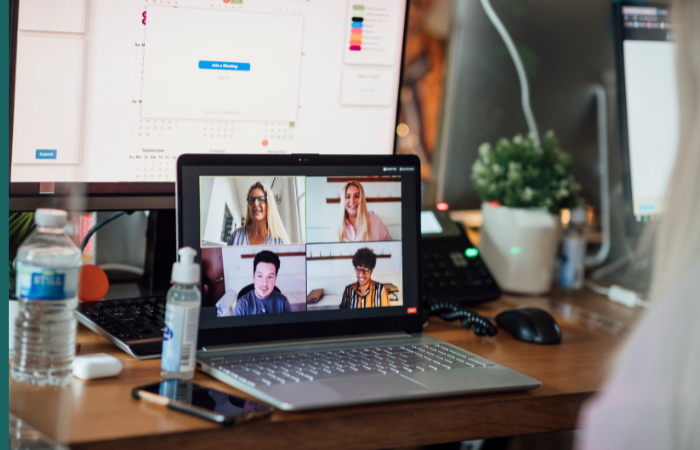The Impact of Animation on Businesses
Whether it be through tv advertising, infographics, logos, design or video content, visual content plays an integral role in brand marketing. Humans are visual learners and in keeping with the advances of technology today the growth of video content in recent years has been meteoric.
Youtube, Instagram Stories, TikTok, Facebook Live and Live Streaming are currently the go-to forms of video content which have grown in popularity considerably, leading businesses of all industries to reconsider their marketing strategy to encapsulate video.
Images and copy alone while effective are still static and shouldn’t always be the only medium you explore to tap into your audience. Consumers are almost overwhelmed by choice when it comes to visual content and so businesses need to approach their video marketing strategy with consideration and care. When executed correctly, a video marketing campaign can transform a brand’s visibility ten fold. One form of video that is growing in popularity and showing no signs of slowing down is animation.
Smart Insights recently reported that 92% of marketers see video as an important part of their marketing strategy.
Animation is an incredibly powerful form of marketing. With the ability to tap into a wider audience due to the universally visual nature, animation can not only be used within a marketing campaign, but to enthuse employees, connect with clients or simply improve brand reputation.
This article will highlight various types of animation and offer some insight into the powerful impact animated video can create.
What type of animation is right for my business?
Before any business begins an animation video campaign, businesses need to consider the type of animation they will use. The various types of animation mean businesses aren’t restricted to follow one particular format. Businesses have more flexibility with animation, and can choose a style that is in keeping with their branding, ethos and message that they want to portray with their animated video.
What Are Different Types of Animation?
2D Animation
This style simply considers the height and width of the animated subject. All characters, animated text or animated objects are two dimensional and are usually drawn by hand or on a computer.
3D Animation
3D Animation involves the use of Computer Generated Imagery (CGI) in order to create a 3-dimensional image i.e an image with height, weight and depth. 3D animation brings a product or process to life using computer software. This style can create highly realistic images and is popular with promotional posts.
Hand-drawn Animation
This traditional form of animation is where it all began. Traditional hand-drawn sketches or frames were drawn to encapsulate every movement, layered over one another. This style evokes a sense of nostalgia and warmth and is still practiced with fond connotations today.
Digital 2D Animation
This involves creating visual 2D characters or animated features on a computer. This allows the subject to be adapted into gifs or short-form content. What’s more it is quicker to produce than 3D characters, making it a popular cost-effective solution without the depth, impact or story becoming lost / or affected.
Infographics
Infographics as a form of content are extremely popular for businesses. Easily digestible and downloadable, even the trickiest of concepts can be simplified into an infographic. They can be as creative and informative as you would like, presenting the reader with concise, relevant and informative statements or visuals. Plus, they are more simple and cost-effective to produce.
Kinetic Typography
This style of animation involves the technique of motion to portray an emotion or idea – for example, a group of words are brought to life to emphasise a point. This may involve making the text bigger, smaller, or blend. It’s a simple type of animation that can be highly effective in conveying a point.
Motion Graphics
Motion graphics merge animated graphic design with effective copy – similar to 2D animation from a visual standpoint, this style of animation may involve more shapes and objects. This may be utilised by businesses looking to bring their logo to life, for example.
Screen Capture Animation
Screen capture animation is a type of animation where you can essentially make a screen recording that bit more exciting. The fundamentals of screen recording are the same, however, it is presented through an animation. This gives more freedom for businesses to get creative with music, colour schemes, on-screen movements or a voice over, for example. This style of animation is useful for explainer videos that would benefit from a little more edge to bring them to life.
What makes a great animation?
There is no set formula for success when it comes to great animation, but business should always aim to create an animation that:
Informs and entertains
Forms a connection with the viewer
Is of a suitable length
Accurately portrays a business & its values
Delivers a clear and impactful message
Is memorable and original
Businesses need to remember that regardless of budget, style, or length the final animation must encapsulate the business as a brand and convey a message that stays with the consumer. The more memorable, humorous, poignant, relatable, the better, as a stronger emotional connection is formed between the video and the target audience.
Leading on from forming a connection, businesses must work to build trust with the consumer. Humanising a brand can help forge this trust and animated video can see brands form a connection with the consumer through a short, sharp, emotive piece of content. Animation is less commercial than some other visual mediums, allowing businesses to build a sense of connection with their audience through the story they tell. Animations can make any topic, product or service more relatable, and can be used to explain, inform, or simply share a story in a more entertaining way than images or text alone.
Likes and shares will initially draw your immediate audience in but the aim is to make your video shareable so that it is wider received across a variety of industries.
Audiences appreciate it when a brand makes a process as easy as possible. Explainer videos are a really good example of this. Businesses can use the opportunity to show off what they can do in an informative and engaging way this resonates with their network, clients and employees. This leads on to another benefit of animated video - it shows audiences that a brand really cares. Animation is attractive, pleasing to look at, and engaging in its very nature. It can play on emotions and influence choice if done well and leave an audience satisfied, having gained insight into what they’re looking for as well as gaining insight into your brand.
Do I have the budget for an animated video?
Some styles of animation are more expensive to create than others due to the software and time spent. When compared to other video formats, animation can be a highly cost-effective solution when compared to real-time footage. If a business were to create a promotional video without animation the following would need to be considered:
A film crew
Various equipment
Post-production costs
A suitable location or set
A shooting schedule
Actors
The above would be a much higher cost than that of animated video. The best way to approach this, and for businesses to understand what’s possible with the budget they have, would be to get in touch with a video production company who offers animation video services. Video production companies will be able to discuss various options as well as offer a complete service including post-production.
How can animation support the promotion of your business?
No two businesses are the same, so the way you approach animation and how you want to implement it will differ on a case by case basis; but, another benefit of animation is that you can explore a unique storytelling experience, designed for a specific viewer.
Consumers reward originality and authenticity so what better way to connect with consumers than with a highly engaging, visually sharp video. Animated video allows a business to condense all the information they wish to share in a completely original format. Allowing for complete creative freedom, it can encapsulate a brand’s story and uniqueness by incorporating brand schemes, colours and ethos.
Animated video as a sharable format can be used for:
Sharing brand stories
Showing a demo of a product
Sharing company/ customer insights
Demonstrating a new product
Introducing a webinar series
Advertising a new event
Animations that are sharp, snappy and succinct are instantly more shareable, so brands need to be sure they consider this in the production process. For example, a Linkedin post can be made that much more engaging and memorable with the addition of an animation, adding weight to the post and giving it more traction to be liked and shared. There are many ways to promote your video and ensure its success which will determine whether the strategy is worthwhile pursuing for your business. This needs to be included in the process to make the time and effort spent creating the animation successful.
The benefits of using animations in meetings
Animation can be of great benefit to businesses looking to impress clients or enthuse existing clients and consumers with a new product or service. In a meeting, animated video will have far greater impact compared to verbal discussion or written content. As was discussed earlier, a clean and considered animation also shows consumers or clients that as a brand you believe in the new product or service, so much so that you have gone to the lengths of creating an animation to introduce it.
The benefits of using animation for employee engagement
Animation can not only be used in the capacity of consumer outreach but internally by businesses too. It is important to ensure employees remain enthused and onboard regarding any updates or change in direction concerning the business. Animation videos are a powerful tool that can be used to share an idea or initiative with employees to maintain morale and productivity.
Forbes recently reported that highly engaged teams show 21% greater profitability.
Animation encapsulates highly interactive visuals and audio with less restrictions than other formats. This means the audience doesn’t need to work hard to understand the content they’re watching. In real business practice i.e. employee engagement, complex topics can be easily simplified with an animated video, which could prove very useful when trying to explain a new strategy to a room full of people. Viewers retain 95% of a message they learn through video (Source: Wordstream), meaning a company will find their message resonates far more than through words alone.
As well as assisting in message retention, animation also gives businesses the opportunity to take a more personalised approach to team training and in-house practices. When time and care is put into employee engagement, employees are more likely to stay with a company because they feel valued.
The pitfalls of animation and business
One potential pitfall of using animated video in the business capacity is that it can be a time consuming endeavour. There are lots of steps involved in animation and decisions or changes must be made in the design and planning. Forethought is necessary, with little room for change later on, which can be problematic for a business that pivots frequently.
However, it can also be said that animation can be a worthy investment. This is because animation remains fresh looking for longer with updates needed far less regularly than a traditional promotional video.
Conclusion
Animated video can greatly impact a business’ marketing strategy, delivering key messages and increasing brand awareness in a format that is engaging, original and fun. When approached with the right story and impactful message, animation has the power to connect a business to their target audience and employees on a deeper, more personal level - all that’s needed is a great idea to bring it to life.








